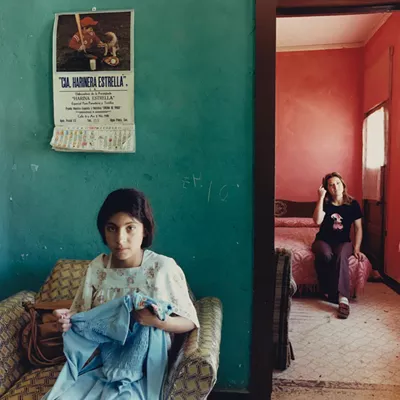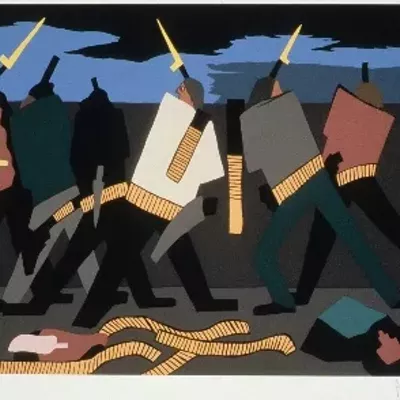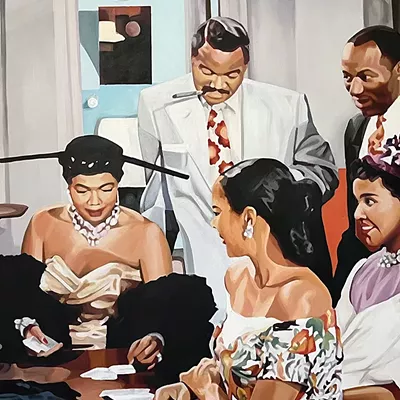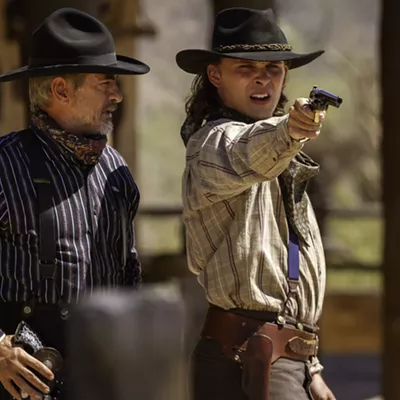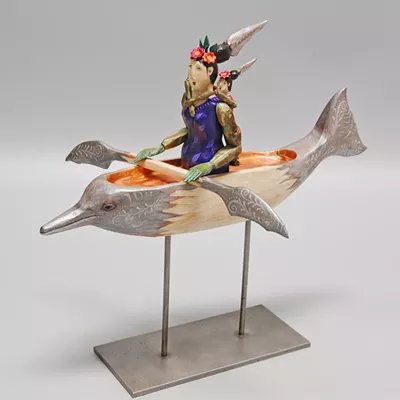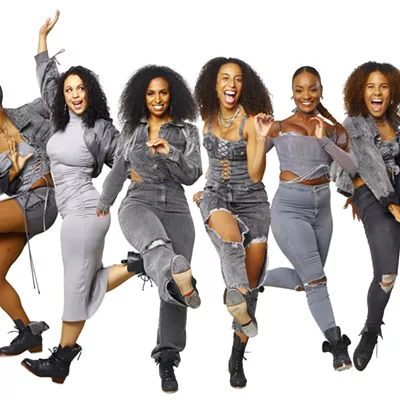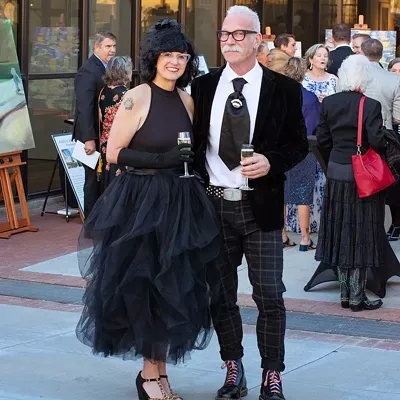Artifact Dance Project is known for live music at its contemporary dance concerts, played on violins, guitars and drums. This weekend, though, in New Moves, one dance will depend on the music made by the human body.
First-time choreographer Nathanael Myers uses his own breath as the soundtrack for his dance "<breathe>>."
Working with local sound artist Karima Walker, Myers descended into the basement of Artifact's warehouse studio downtown to record.
"I did an improv dance session and she picked up the sounds of my breath and movement," Myers says. "Sometimes I breathed loudly, on purpose, but overall it's just the natural sound of my body breathing."
The pair "abstracted the sound" and Walker wove in some mechanical noises to create a 20-minute soundscape. It ends with breathing that recalls "the ocean crashing up waves onto a shore," Myers says. "It gets ethereal and atmospheric. It's almost a meditation."
"<breathe>>" is danced by five "powerhouse" women, Myers says, including four Artifact regulars and one guest artist, Isolde Edminster-Genet, who "moves beautifully." Allie Knuth, who also choreographed a work in the show, will dance in Myers' piece, and he will dance in hers, "20/200."
While most dancers start training in childhood, Myers, at 25, has been dancing only two years. He says it's humbling to choreograph work on cast members with far more experience. "It's a good challenge for me," he says
Rooted in ballet and modern dance, his "<breathe>>" will be the finale of New Waves, a short, three-work concert by a trio of Artifact dancers turned choreographers.
The show's three fledgling dancemakers, Samuel Kraus, Knuth and Myers, are all "dancers who have worked with us for the last couple of years," says Claire Hancock, co-artistic director of Artifact. Myers played the evil king in Judith this season and danced in the chorus in Frida. Knuth and Krause were both in Judith and Downtown, and Kraus was in last year's acclaimed Dillinger.
All three are recent UA grads, but unlike many Artifact recruits, none were dance majors. In fact, Kraus, like Myers is fairly new to dance; only Knuth is a self-described "dance kid." And their interests range all over the arts map: Kraus is a singer and songwriter, a math and physiology major with an eye on medical school and a track-and-field athlete. Knuth is a theater arts grad who has choreographed lately on local theater stages, including for the recent Salomé production at Scoundrel & Scamp.
And Myers is a visual artist and a longtime saxophone player who played in the UA marching band all through college, even designing movement routines for the pep band. His multidisciplinary skills recently won him the Buffalo Exchange Community Arts Award.
Now, Hancock notes, these eclectic artists are "trying their hand at choreography." Not surprisingly, with their diverse interests, "each of their dances is so different from the others. It's going to be a journey for the audience."
Besides Myers' ethereal abstraction, danced by women in form-fitting dancewear, there's the concert opener, Kraus's R&B "KNOCKOUT." A semi-autobiographical narrative work with a soundtrack of five blues songs, the dance includes "a "ballad on the rockish side" written and sung by Kraus and his dad, Steve Kraus.
The song "The Blue Night" honors the memory of Samuel's grandfather (and Steve's father), a motorcyclist who died a year ago.
"Blues music covers despair, love, faith, grieving and loss," Samuel Kraus notes. "It reminds you of your own life."
Kraus came to dance just four years ago, studying African with Barbea Williams. He performed with Barbea Williams Performing Company at a Stevie Eller Dance Theatre concert, and made a connection with Bowman and Hancock. He joined the Artifact internship program, taking class and working at the studio, while also bearing down on science labs and math back at the UA. After a stint in ADP 2, a one-season adjunct Artifact troupe also included Knuth and Myers, he transitioned into the main company.
"I love to dance," he says cheerfully, and will perform in his own piece, along with five other dancers, including Artifact's Marquez Johnson, who nearly stole the show in a featured role in this season's Frida. Dressed in vintage vests and dress, the three men and three women in KNOCKOUT will perform contemporary dance, inflected with African moves.
Kraus is loving doing the choreography himself, and like Myers he's presenting his first work.
"You can convey your own ideas," he exults. "And portray what you want."
Knuth's "20/200," the middle dance in the concert, is "funky contemporary," a street-smart hip-hop dance blend performed by dancers in sneakers and cool urban clothes. And it's the only piece in the concert with a live musician on stage, César Manjarrez, who plays acoustic sax backed up by his own electronic sounds.
The seven dancers, including Knuth, dance a wild blend of jazz, hip-hop, and Artifact-infused ballet and modern. Knuth only belatedly added herself to the cast, deciding that the dance "needed one more body."
That body has been dancing since Knuth was a 6 year old in Tempe. "I did tap, ballet, jazz, acro"—a dancified version of gymnastics—"and hip-hop. I was super into it. I was the only little girl doing hip-hop."
She turned away from dance to major in theater arts at the UA, but found her way back through Ashley Bowman, co-artistic director of Artifact.
"Ashley offered a cool free workshop in acting through movement," Knuth says. "It felt so good to dance again."
Like Kraus, she went through the demanding Artifact internship while still in college, and then moved on to ADP 2 and finally the main company.
Her new work, "20/200," is about rough spots in life. "You're moving through life and you get stuck in a rut," she explains. "I used imagery and movement to show that idea. There's a carousel piece where the dancers are rotating in circles."
Knuth said the work makes use of her theater skills, creating story through movement. As she puts it, "I'm using my dramaturg brain."


